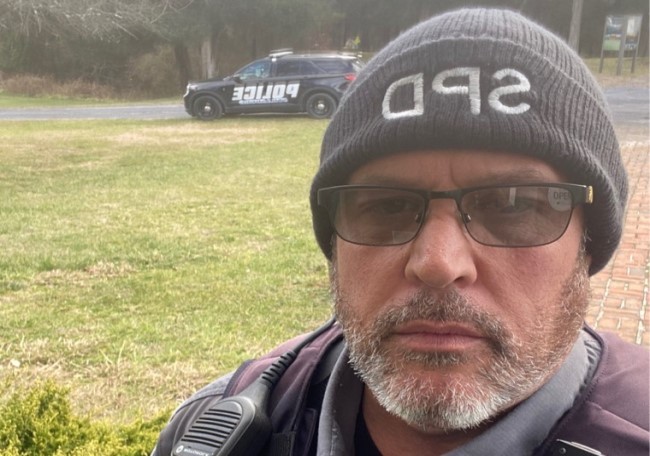George Rathore: The Officer Behind the Badge
Unveiling the Complexities of Law Enforcement Through One Man's Story

George Rathore, an officer with the Strasburg Police Department, became a focal point of public attention following a critical incident in December 2023. In a situation that escalated rapidly, Rathore was forced to make a split-second decision that resulted in the death of Melissa Renee Tompkins. This article delves into Rathore’s background, the incident’s details, and the broader implications for law enforcement and community relations.
Introduction:
In law enforcement, each officer’s actions can have lasting impacts on the communities they serve and their personal and professional lives. George Rathore, a name that has recently surfaced in the media, is one such officer whose career took a significant turn following a tragic incident in Strasburg, Virginia. This article explores Rathore’s career, the events that led to the fatal shooting of Melissa Renee Tompkins, and the broader implications for policing in America.
George Rathore: Early Career and Background
George Rathore began his career with the Strasburg Police Department at an undisclosed date. With a steady position within the force, Rathore has been known for his commitment to maintaining public safety. However, like many officers, his role came with significant challenges, especially when confronting unpredictable situations. Rathore’s early years on the force were relatively unremarkable, with no significant incidents that put him in the public eye until December 17, 2023.
The December 17, 2023, Incident: A Night that Changed Everything
On a cold December night, George Rathore and his colleague, Officer Bianca M. Hager, responded to a disturbance at the Ramada Inn in Strasburg, Virginia. The call reported a disorderly female, later identified as Melissa Renee Tompkins, causing significant disruption in the hotel lobby. According to reports, Tompkins had been throwing objects and running through the hallways with a fire extinguisher. What started as a routine call quickly escalated when Tompkins allegedly attacked Rathore with his baton, striking him on the head. In the heat of the moment, Rathore discharged his weapon, fatally wounding Tompkins.
Aftermath and Investigation: Rathore’s Actions Under Scrutiny
In the aftermath of the shooting, Rathore’s actions were thoroughly investigated, as is standard procedure in officer-involved shootings. The incident sparked discussions about the use of force, officer safety, and the challenges faced by law enforcement when dealing with mentally unstable individuals. The investigation ultimately cleared Rathore of any criminal wrongdoing, ruling the shooting as justifiable self-defense. However, the case raised questions about the training and protocols that govern such critical incidents.
The Broader Implications for Law Enforcement
The incident involving George Rathore is not isolated. Across the United States, law enforcement officers regularly face situations that require split-second decisions with life-or-death consequences. This case highlights officers’ immense pressure and the importance of proper training in de-escalation techniques. Furthermore, it underscores law enforcement’s need for transparency and accountability to maintain public trust.
Public Perception and Media Coverage
Media coverage of the incident varied widely, with some outlets focusing on the tragic loss of life and others highlighting the challenges faced by officers like Rathore. Public opinion was similarly divided, with some viewing Rathore’s actions as necessary and others questioning the use of lethal force. The case sparked broader discussions about police reform, the role of mental health in law enforcement encounters, and the systemic issues that contribute to such tragedies.
The Personal Impact on George Rathore
While much of the focus has been on the public and legal aspects of the incident, it is essential to consider the personal toll on George Rathore. Being involved in a fatal shooting is a life-altering event that can have profound psychological effects. Rathore, like many officers who have been in similar situations, likely faced significant emotional and mental health challenges following the incident. The support systems for officers dealing with such events are crucial in helping them cope with the aftermath.
Lessons Learned and Moving Forward
George Rathore’s case is a stark reminder of the complexities and dangers inherent in law enforcement. It highlights the need for ongoing training, particularly in handling situations involving mentally unstable individuals, and the importance of clear protocols to guide officers in high-pressure situations. As law enforcement agencies evolve, the lessons learned from cases like Rathore’s will be instrumental in shaping future policies and practices.
Conclusion: A Call for Balance in Policing
The story of George Rathore is a microcosm of the more significant issues facing law enforcement today. It underscores the delicate balance officers must strike between enforcing the law and ensuring public safety while safeguarding their lives. Law enforcement agencies must focus on improving training, enhancing transparency, and fostering stronger community relations. Only by addressing these challenges can we prevent future tragedies and build a more just and effective policing system.

